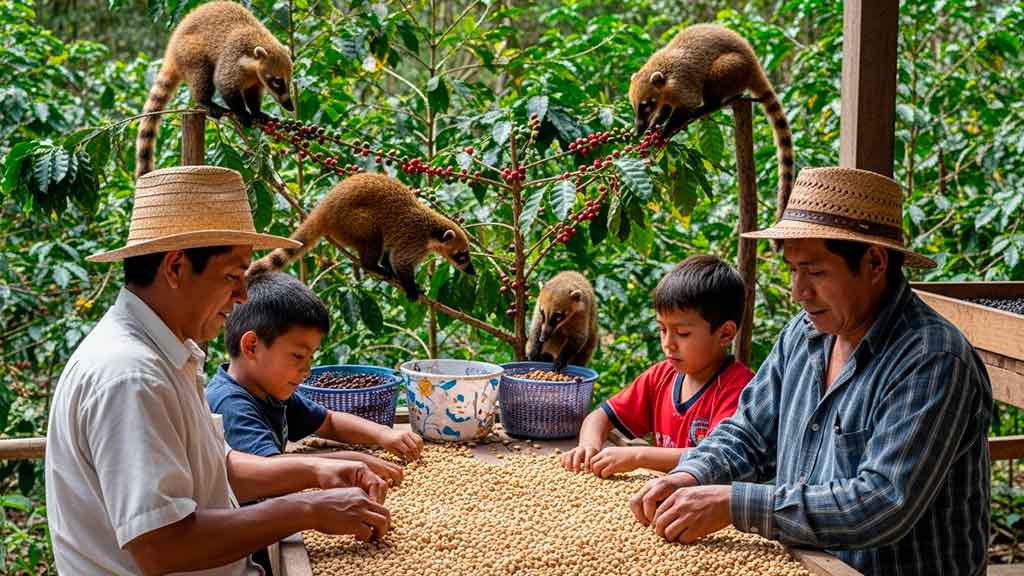Peru, globally recognized for its vast biodiversity, cultural richness, and exceptional gastronomy, also stands out in agricultural exports, particularly in coffee production. Ranking among the top ten global exporters, Peruvian coffee is a highly prestigious product. Within this context of agricultural innovation and experimentation, an exotic variety has emerged, captivating the attention of demanding coffee aficionados: Misha Coffee, also known as Peruvian “poo” coffee.
This coffee is produced through a unique process involving a small mammal called the coatí (or Uchunari). The coatí, an animal resembling a mix between a cat, a raccoon, and a monkey, inhabits the South American jungles. This agile, omnivorous creature, with its long, flexible snout, moves effortlessly on the ground and through the trees.
The Coatí’s Unique Role in Bean Fermentation
The key to Misha Coffee lies in the coatí’s role in the bean fermentation process. Farmers feed these animals coffee cherries along with other fruits. As the cherries pass through the coatí’s digestive system, the enzymes present partially break down the coffee cherry.
While the bean itself is not digested, this passage through the animal’s digestive system modifies the proteins that typically contribute bitterness to the coffee. The beans, once excreted, are meticulously collected, washed, and dried. Subsequently, they are roasted and ground. The result is a coffee with a unique flavor profile, described by experts as full-bodied, almost bitterness-free, with subtle notes of Peruvian jungle fruits.
A Luxury Coffee with Jungle Flavor
Peruvian Misha Coffee has positioned itself as one of the most expensive coffees in the world. Its price reflects the complexity of its production and its status as a luxury product.
This coffee shares similarities with the famous Kopi Luwak of Indonesia, where a similar process is carried out using civet feces. In Peru, however, the coatí is the protagonist of this natural process that enhances the bean’s characteristics.
Misha Coffee is an example of how the interaction between nature and agriculture can lead to exceptional products. This process not only highlights the richness of Peruvian biodiversity but also offers an incomparable sensory experience for coffee connoisseurs.
Discover the Soul of Peru: Travel and Nature Experiences
Peru offers immense diversity, from the vastness of the Andes to the vibrant Amazon. Explore its unique landscapes and discover the fascinating connection between culture, nature, and daily life. If you want to immerse yourself in the rich coffee tradition and other secrets of the jungle, we invite you to explore options for a Tour of the Coffee Route.


